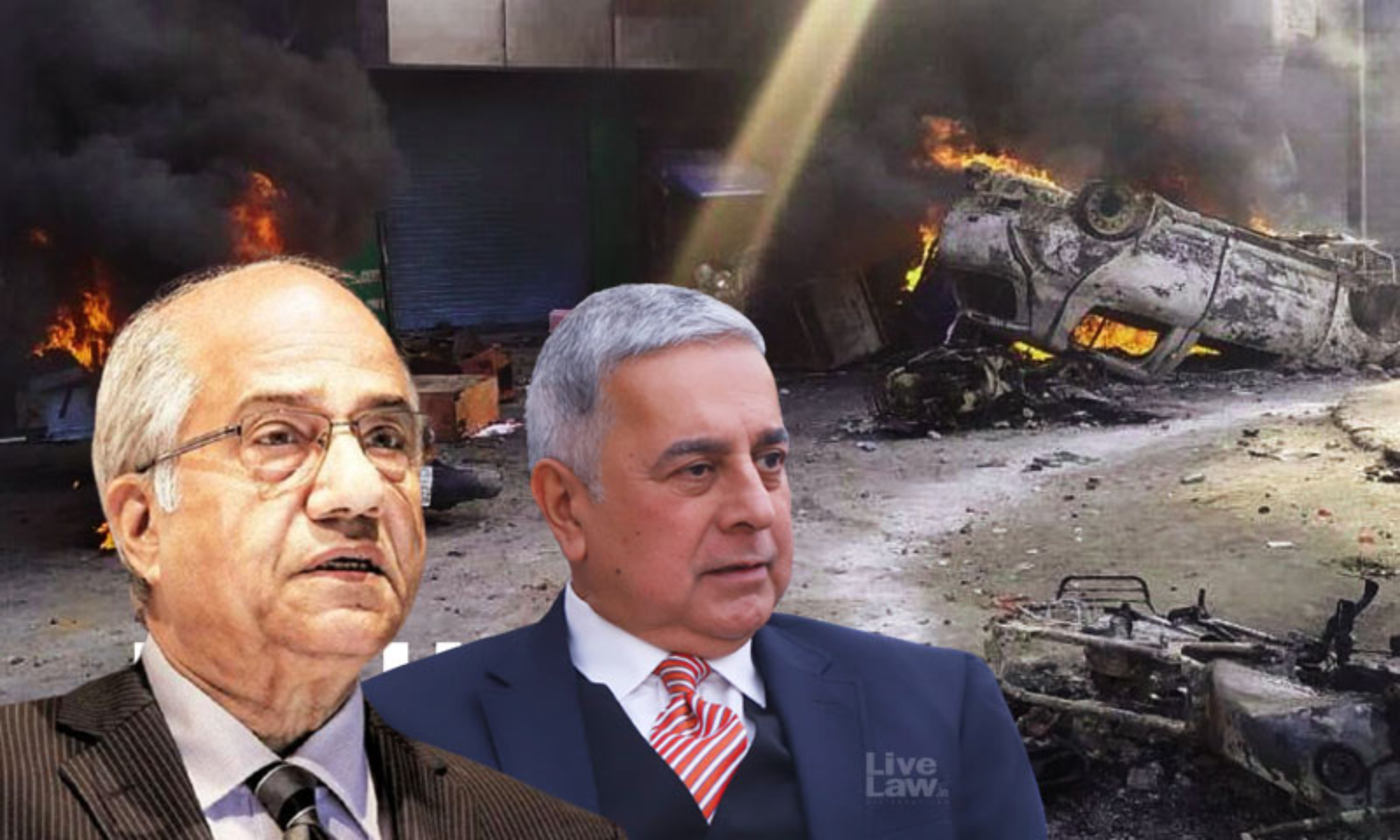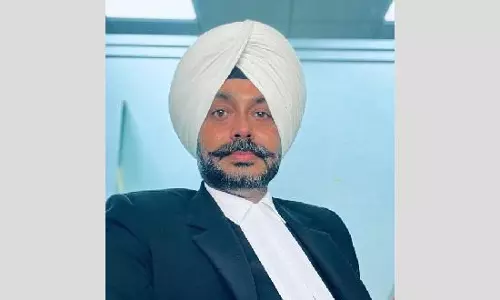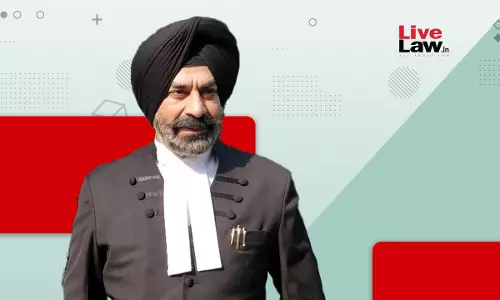'Delhi Riots- Causes, Fallout And Aftermath': A Report By Citizens And Lawyers Published

A group of concerned citizens, lawyers and students have released a Report titled "Delhi Riots of February 2020: Causes, Fallout & Aftermath". The Report, edited by Senior Advocate Chander Uday Singh, tracks the events preceding north-east Delhi's violence of February 2020, examines the role played by the Delhi police, and critically examines the chronology and narrative that...
A group of concerned citizens, lawyers and students have released a Report titled "Delhi Riots of February 2020: Causes, Fallout & Aftermath".
The Report, edited by Senior Advocate Chander Uday Singh, tracks the events preceding north-east Delhi's violence of February 2020, examines the role played by the Delhi police, and critically examines the chronology and narrative that have driven police actions.
"It traces the genesis and probable causes, and seeks to unravel the manner in which mayhem, arson and destruction were unleashed on an area which had no history of communal strife," a press note issued by the group states.
Unleashed in the backdrop of widespread ant-CAA protests, communal violence engulfed north-east Delhi in the fateful week of 23 February 2020, killing 53 individuals, injuring at least 473 civilians, destroying property worth hundreds of crores and displacing thousands.
This independent report, claimed to be based on the data gathered from "unimpeachable news sources", starts with a prologue by Justice BN Srikrishna, former Judge of the Supreme Court of India, who also headed the Commission of Enquiry into Bombay riots of 1992. He wrote:
"With the heart rending experience gathered during the Commission of Inquiry that went into the riots and violent incidents in Mumbai during December 1992-January 1993, and the sense of apathy towards the victims of such riots that was clearly discernible there, I could not but get a feeling of deja vu while reading this report. It is time that the State machinery and Constitutional functionaries display greater seriousness in investigation of the causes of such riots and take appropriate steps to prevent their recurrence."
Early Warning Signs
The Report begins by emphasizing that the incidents that occurred after passing of the CAA Bill in December 2019 and before the Delhi Riots broke out on February 23, 2020, were replete of "warning signs" that violence may escalate.
It lists the proximate causes, catalysts, and triggers of violence, including:
- Violent clash between students of Jamia Millia Islamia and the Police during a protest-march called by the Jamia Teachers Association (JTA) in December 2019, to oppose the CAA and NRC.
- Sit-in to protest organized by women of Shaheen Bagh in December 2019
- Violence in JNU in January 2020
- Pro-CAA rallies/ speeches by political leaders, including BJP leader Kapil Mishra, often centre-staging anti-CAA protestors and promoting hate verses.
The Report suggests that these incidents created a "facilitative environment" for violence and consequently, Kapil Mishra's provocative speech in Jaffrabad, and the incendiary Facebook Live posts by Ragini Tiwari, appear to have sparked the powder keg. The violent incidents, the reports states, were further "bolstered by rumour and misinformation on social media"
The report further states,
"Factors that contributed to the rapid escalation and horrific consequences include the ambiguity of the role of police, combining deliberate inaction, with selective acts of complicity with Hindu rioters, participating in striking terror amongst Muslim victims, acting with impunity in the full gaze of mobile phone webcams, television cameras, and the media, and of course, an administration that clearly failed to mobilise and activate the resources necessary for its effective containment."
The violence had multiple aspects
The Report states that the violence between 23-26 February 2020 had multiple aspects and fallouts.
"It raises central questions about whether the perpetrators were outsiders or locals – combined reading of several news reports suggests outside coordination planning and support, strategic deployment of rampaging mobs who ravaged properties and attacked people without hindrance, and local vigilantism and complicity given the precision with within localities, households, establishments, and property were targeted. Social media played a key role in mobilization and coordination of attacks as well as the circulation of rumours and misinformation aimed to incite. Further, gender-based violence has been used an instrument of violence and intimidation"
Failure of law and order
As per the Report, the police's inaction, complicity, and impunity contributed to the escalation of the violence. Moreover, delayed response until 26 February 2020 allowed the violence to continue unabated which resulted in mounting loss of lives.
"The failure of the law and order situation arose as a result of reported incidents of police partaking in the violence, providing tacit support to Hindu mobs, and failing to take appropriate action to staunch the loss of lives, livelihoods, and properties," the report claims.
Inadequate relief and rehabilitation
The Report claims that the police "prevented aid from reaching the injured" by stopping ambulances from entering riot affected areas. Further it is stated that there are "substantial gaps" in compensation promised versus delivered.
"Reasons can be pegged down to tedious, obscure processes, opaque mode of assessment and lack of proper documentation provided by authorities in cases where FIRs of two individuals are clubbed together which hinders them from claiming compensation. Further, civil society activists have pointed out that amounts of compensation are inadequate and lower than what was offered during the Muzaffarnagar riots," the report states.
Political parallelism in investigation
The group has come to a finding that the narrative surrounding the Delhi riots "is not only inconsistent with the facts, but completely ignores swathes of data and audio-visual evidence that are in the public domain."
It is stated that the 'narrative' and 'chronology' in the Delhi Police charge-sheets have hinted at a concerted conspiracy by anti-CAA protestors to defame the Narendra Modi-led government during the visit of the US President, as 'Muslim provocation' vs. 'Hindu retaliation'.
However, "despite their incendiary speeches reportedly acting as a trigger to incite the mob" the names of key leaders of the ruling party (BJP) have been omitted from the police reports.
"Multiple news reports have highlighted that the police inaction and incidents of impunity and complicity on part of the police forces. It reflected a high degree of political parallelism with the political narrative put forward by the Central government and ruling party. Moreover, the police chose to base their 'analysis' of the event on selective aspects of the witness statements that conform to their existing narratives," the report states.
Recommendations
The Report concludes with a list of suggestions for fairly investigating the episode and re-building trust with the communities:
- Formation of an independent multi-stakeholder accountability team
- Clear bottlenecks in relief and rehabilitation
- Institute adequate rehabilitation package
- Establish strong witness protection protocols
- Publish official list of deaths, disappearance, and grievous harm
- Publish official account of extent of compensation promised versus extent of compensation disbursed
- Undertake trust and accountability drives with communities
Senior Advocate Chander Uday Singh said,
"This report is an effort to traverse published reportage on the Delhi violence in order to piece together multiple pieces of evidence into a credible narrative of the events. It is based upon, and recognises, the work done by published fact-finding initiatives in the public domain, as well as contemporaneous news reports during the days of the violence as well as in its aftermath. An effort was made to gather information solely from unimpeachable and publicly available news sources."
Click Here To Download Full Report
Read Report




